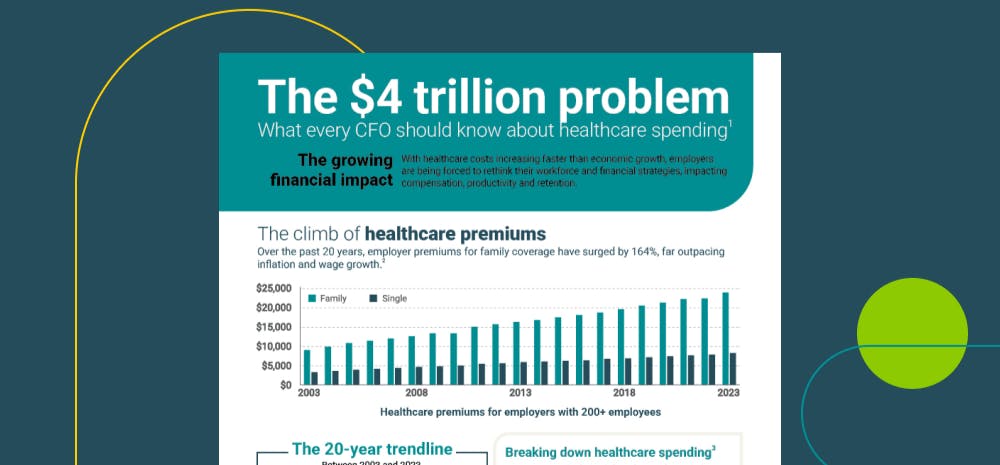The unspoken business risk
As the cost of health benefits climbs, with U.S. health spending up 250% in 20 years, the broader economic impact is impossible to ignore.
Healthcare spending now accounts for 17.3% of the U.S. economy, nearly double that of other developed nations.
A majority of large employers self-fund their health plans, directly exposing themselves to rising healthcare cost trends.
Employers still shoulder 70–84% of premium costs, an increasingly unsustainable model without effective cost containment strategies.
Average employer-sponsored family coverage now tops $23,968 per employee, pushing benefits budgets to the breaking point.


